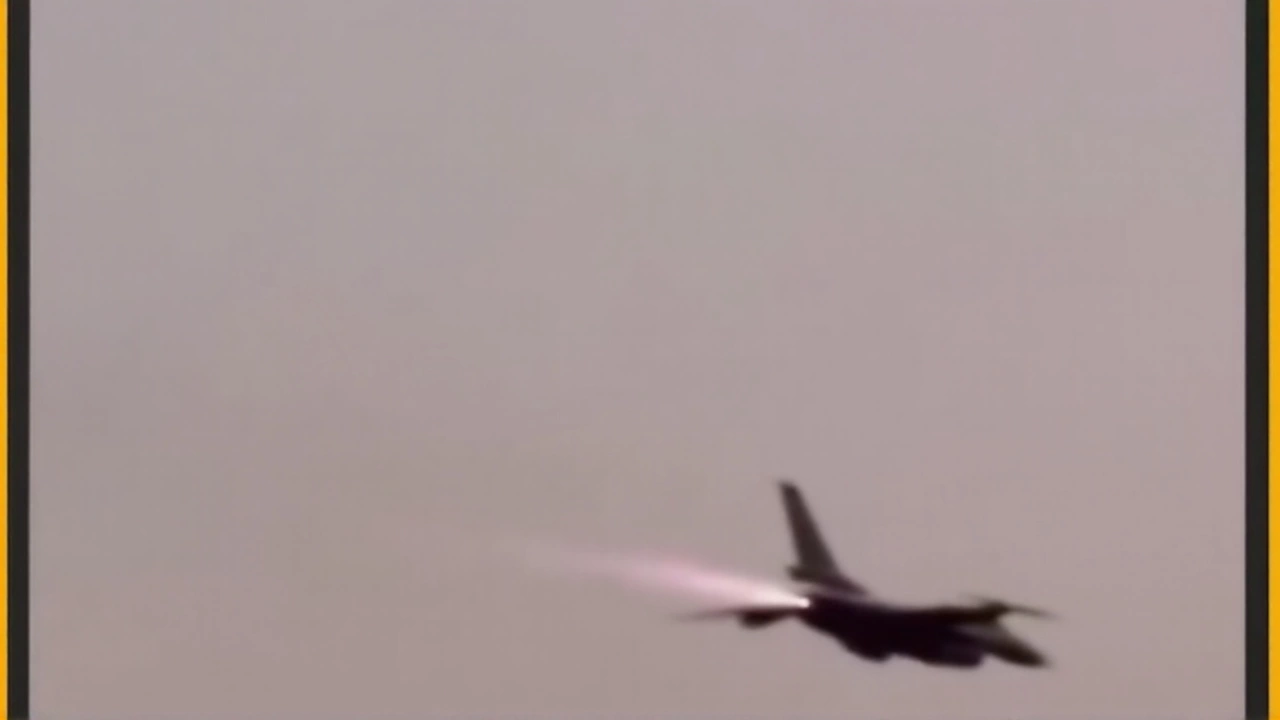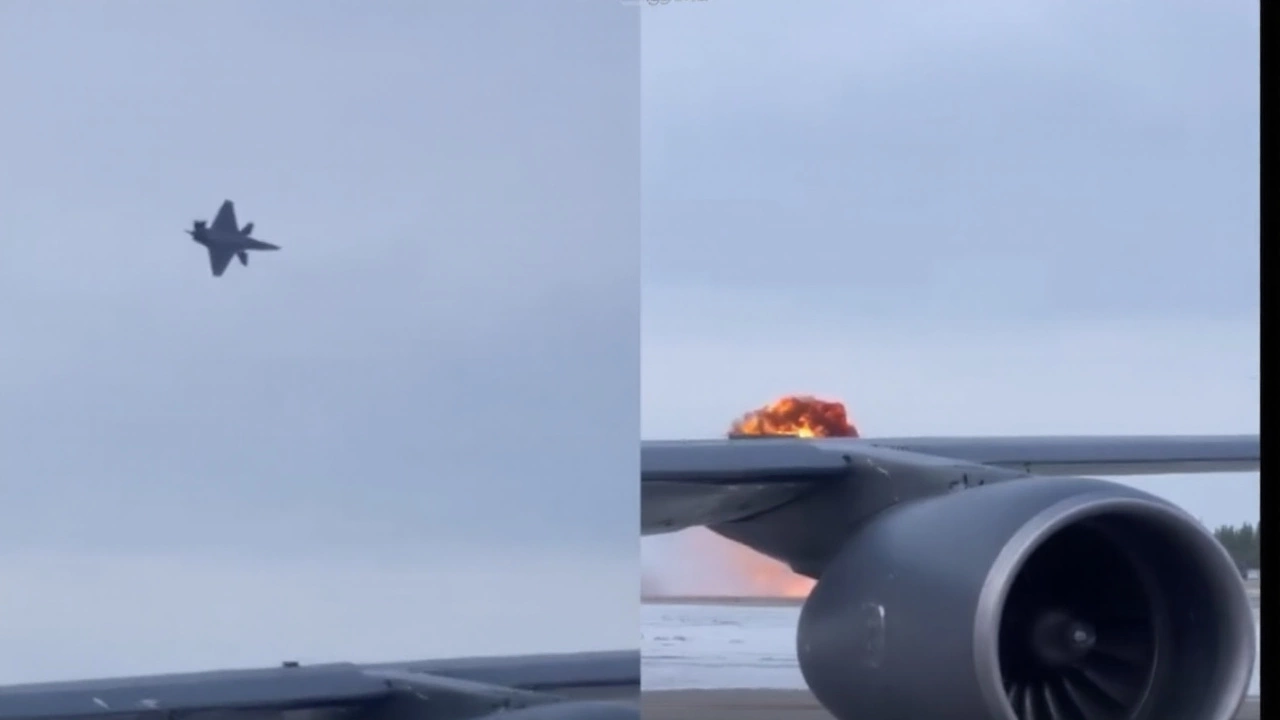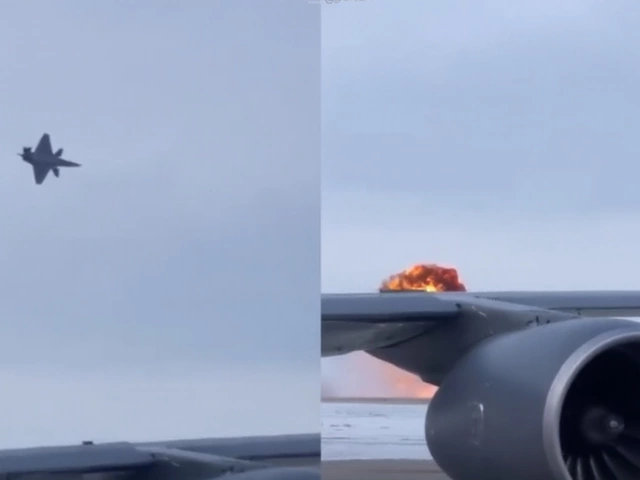What happened in the air over Alaska
An F-35A Lightning II training flight out of Eielson Air Force Base turned into a slow-motion emergency that stretched nearly an hour. Shortly after takeoff on January 28, 2025, the pilot tried to retract the landing gear. It didn’t move as expected. When he cycled the gear, the nose wheel locked off-center—angled left—setting up a fight against physics and software that would end with a fireball on the runway.
From there, everything became a test of patience and procedure. The pilot flew near the base while maintainers patched him into a live call with five Lockheed Martin engineers. For roughly 50 minutes, they talked through options, systems logic, and checklists. Two touch-and-go attempts followed to see if the jet’s sensors would reset. They didn’t.
Video from the field shows the $196.5 million fighter spiraling toward the runway, hitting hard, and exploding into a towering blaze. The pilot had already punched out and floated down under a parachute. He suffered minor injuries and was taken to Bassett Army Community Hospital in Fairbanks. Emergency crews reached the crash site in under a minute. Debris stayed within the airfield boundary.
It was bitterly cold that day—about -1°F (-17°C) on the ground—and much colder at altitude. That alone doesn’t down an F-35, but it sets the stage for one of the worst things that can happen to a modern jet: ice in the wrong system at the wrong time.
The 39-page Accident Investigation Board report, released this week, lays out the chain of failures in plain terms. Hydraulic fluid in the landing gear system was contaminated with water. That water froze inside the nose and main gear struts, jammed components, and confused the jet’s “Weight on Wheels” sensors—the small but crucial inputs that tell the aircraft whether it’s on the ground or in the air. Those false readings drove the system to behave as if the jet were on the runway when it wasn’t.
Once the nose gear locked off-center, each attempt to land carried real risk. A crooked nose wheel can grab, veer, or collapse under load. The engineers on the call worked the problem with the pilot for nearly an hour, but they couldn’t overcome the frozen hardware or the bad sensor logic it triggered. After the second touch-and-go, the pilot ejected. The airframe was destroyed.
Just nine days later, another F-35 at the same Alaska base ran into a similar hydraulic icing issue, according to the Air Force. This time, the jet landed safely. That second case suggests crews moved fast to adapt, even before the investigation wrapped.

What the investigation says — and what changes next
Col. Michael Lewis, who led the Accident Investigation Board, named the primary cause: hydraulic fluid contaminated by water that froze in the landing gear. Post-crash analysis estimated that roughly one-third of the fluid they sampled wasn’t fluid at all—it was water. In Arctic conditions, that’s a ticking bomb. It doesn’t take much internal ice to lock a valve, block a line, or fool a sensor.
The board also flagged contributing factors: maintenance practices and crew decision-making. The report points to a 2024 maintenance update that the engineers actually discussed during the mid-air call. Investigators said that if that updated guidance had been followed end-to-end, the advice likely would have been different—either commit to a controlled full-stop landing early or move straight to a planned ejection, not a second touch-and-go.
Why is water in hydraulic systems so dangerous? Hydraulics are the muscle of a fighter jet. They move the landing gear, control surfaces, and brakes. The fluid is supposed to be clean, dry, and stable across a huge temperature range. Add water, and you change everything. In extreme cold, it freezes. When it thaws, it can corrode parts and mess with seals. It also changes the feel of the system and can confuse the sensors that are supposed to protect the jet from bad configuration states.
So how does water get in? That’s the part investigators and maintainers will keep pulling on. It can come from improper storage or handling of fluid, from condensation during servicing, or from compromised seals. That’s why tight fluid controls—dry storage, closed containers, careful sampling, and documented chain-of-custody—are a big deal in aviation. The board’s findings suggest the maintenance program at some point didn’t keep water out, and the cold did the rest.
The Weight on Wheels system is a good example of how one bad input can cascade. In many jets, WOW signals gate or modify a long list of functions: braking logic, thrust reversers (for aircraft that have them), nose-wheel steering, and how the flight control system behaves near the ground. If the jet thinks it’s on the runway when it’s actually airborne, the pilot can get unexpected behavior at exactly the wrong moment—during takeoff and landing.
That also explains why the touch-and-go attempts were such a judgment call. In theory, cycling through a brief runway contact can shake loose a sticky component or reset a logic state. In practice, doing it with a skewed nose wheel and frozen hydraulics piles on risk. The investigators said the updated 2024 maintenance guidance would likely have steered the team away from that second try.
Eielson is no stranger to cold-weather ops. The base exists, in part, to test and train in harsh conditions. But the lesson here is simple: if water reaches a critical system, the cold will find it. Expect more strict checks across units that fly in sub-zero environments—more frequent water-content testing of hydraulic fluid, tighter servicing procedures, and extra scrutiny of landing gear performance during the first minutes after takeoff.
Timing matters, too. Earlier in January, Air Force Chief of Staff Gen. David Allvin pushed a service-wide reset on safety standards. This crash landed right in the middle of that effort. The emergency response worked as designed, and the pilot lived. The jet didn’t. The Air Force will likely treat this as a maintenance and risk-management case study for cold-weather squadrons.
For the F-35 program, the episode underscores complexity more than anything else. You can have the most advanced sensors and the most expensive software, and a basic maintenance miss—keeping water out of hydraulic fluid—can still bring the aircraft down. It’s a reminder that reliability in fifth-gen fighters depends as much on ground discipline as airborne tech.
The good news, if there is any, is that the second Alaska event ended differently. A similar hydraulic icing symptom appeared, and that jet returned safely. That suggests quick learning on the flight line: immediate checks, conservative calls, and fewer chances taken when the gear or WOW logic looks wrong.
The investigation leaves the Air Force with a practical to-do list: trace how water entered the system, audit fluid handling across units that share procedures with Eielson, and make sure the 2024 maintenance update is not just read but used when it counts. Expect command-level messages to crews about when to stop troubleshooting in the air and choose a controlled landing or ejection instead.
At the human level, the pilot survived, which is the outcome everyone worked for during that 50-minute call. The aircraft was lost, but the lesson is plain enough for every squadron that flies in the cold: protect the hydraulics, trust the guidance, and don’t let a frozen sensor write the last line of the mishap report.
The Air Force has not announced fleet-wide stand-downs tied to this mishap, but targeted checks are the norm after a loss like this. With winter training still underway in Alaska, crews will be running tighter preflight and postflight inspections, paying close attention to gear behavior and any signs that WOW logic doesn’t match reality. That’s how you keep a one-off failure from turning into a pattern.
As for the public clip of the explosion, it’s a stark visual for what the report describes in dense, technical language. It took a frozen contaminant to knock out a fifth-generation fighter. The pilot’s survival, the minute-fast response, and the quick adaptation seen nine days later at the same base are the counterpoints. They hint at a system that still catches people when machines fail—even in an unforgiving Arctic winter—and that moves fast to stop the next F-35 crash before it starts.








Write a comment